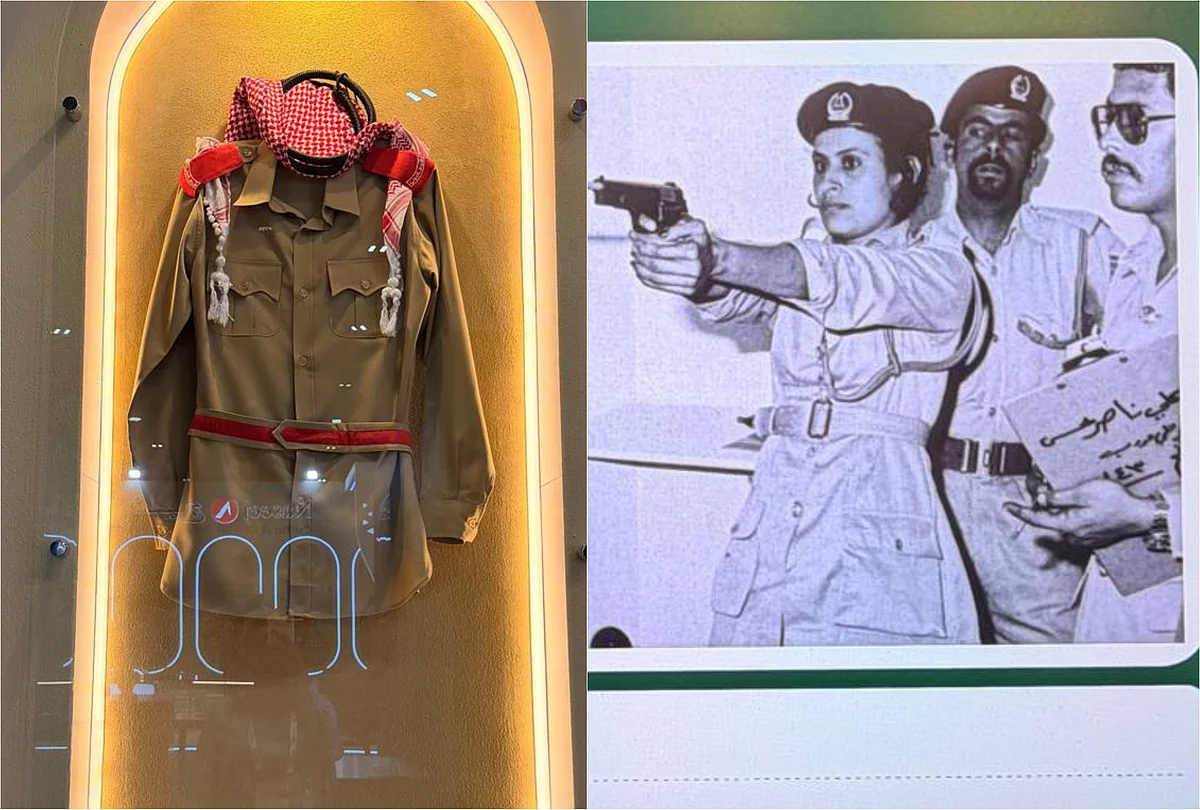
Look: Rare Photos And Artefacts Trace The 70-Year Journey Of Dubai Police
Uniforms, faded letters, vintage photographs, and the faint sound of a marching anthem fill the space as Dubai Police unveiled a make-shift museum at their booth at the International Council of Museums (ICOM).
The exhibition steps back in time and takes visitors on a historic journey, telling a story that spans nearly seven decades, from the emirate's first police force in 1956 to today's globally recognised institution.
Recommended For YouThe exhibition, part of the world's largest gathering of museum professionals, runs until November 17 at Dubai World Trade Centre. It marks the first time that the International Council of Museums (ICOM) has brought its general conference to the Middle East, Africa, and South Asia.
Stay up to date with the latest news. Follow KT on WhatsApp Channels.
A journey that began in 1956The display opens with a simple yet powerful image, the old Dubai Police uniform, a khaki shirt paired with a red-and-white ghutra and rope agal, framed neatly under warm lights. Next to it hangs the current ceremonial uniform, its design more structured, its insignia polished gold. Together, they trace nearly seven decades of service and discipline.
Not far from the uniforms, a glass case holds what looks like an ordinary red telephone, until you read the label:“The first video-call phone (Sony-made) that entered service in Dubai Police in 2000.” It's a quiet reminder that the force's reputation for technological readiness didn't begin with smart patrol cars or AI systems; it started with early curiosity about innovation.
Echoes of the first anthem
Further along the wall, a lightbox glows with sheet music titled "National Anthem – Dubai". The text reveals how, in 1963, a competition launched by the Commander-in-Chief of Dubai Police led to the anthem's creation. Corporal Mohammed Hussain composed the winning piece, which became the soundtrack for parades and official ceremonies. Even after the formation of the Union in 1971, the anthem continued to play during police salutes, a bridge between the city's early identity and its new national chapter.
- Listen to it below:
Letters, flags, and early correspondence
A few steps away, two yellowed documents sit under glass - typed letters dated June and July 1969, exchanged between Dubai Police and British officials. They discuss flag proportions, materials, and ceremonial protocols. It's a small detail, yet it captures how methodically the department worked in the years leading up to the Union, ensuring every symbol of authority, from flags to uniforms, met international standards.
Nearby, a grainy black-and-white photo shows a group of officers greeting a foreign commander beside a car. Their posture is formal, their uniforms pressed - a snapshot of early diplomacy in policing.
The sound of history
Digital screens loop a series of restored photographs accompanied by audio commentary. Each tells a story:
- Officers lined up beside rows of Land Rovers, their first fleet of patrol vehicles.
A pilot seated in a Dubai Police helicopter marked the introduction of aerial surveillance. A senior figure inspecting the force alongside Dubai's early rulers.
The first police station building, modest and square, with its signboard hand-painted. A convoy of traffic monitoring vans, precursors to today's radar systems.
Women in uniform at a shooting range, part of the first generation of female officers in the UAE.
These images, most of them unseen by the public, highlight moments of transformation, from local patrols to specialised divisions, from handwritten reports to integrated digital command systems.
Blending heritage and innovation
Visitors walking through the exhibit notice a recurring design: an archway resembling the traditional wind-tower architecture of old Dubai, branded with the words“Dubai Police Museum.” The structure blends sand-toned walls with digital interfaces, symbolising the same blend of heritage and progress that defines the institution's story.
Brigadier Ali Khalfan Al Mansouri, Director of the General Department of Community Happiness, was seen touring the stand, a gesture of pride as much as oversight, as officers guided visitors through the city's policing milestones.

Legal Disclaimer:
MENAFN provides the
information “as is” without warranty of any kind. We do not accept
any responsibility or liability for the accuracy, content, images,
videos, licenses, completeness, legality, or reliability of the information
contained in this article. If you have any complaints or copyright
issues related to this article, kindly contact the provider above.

















Comments
No comment